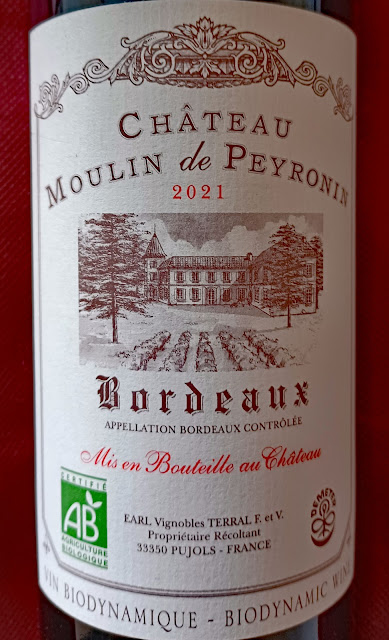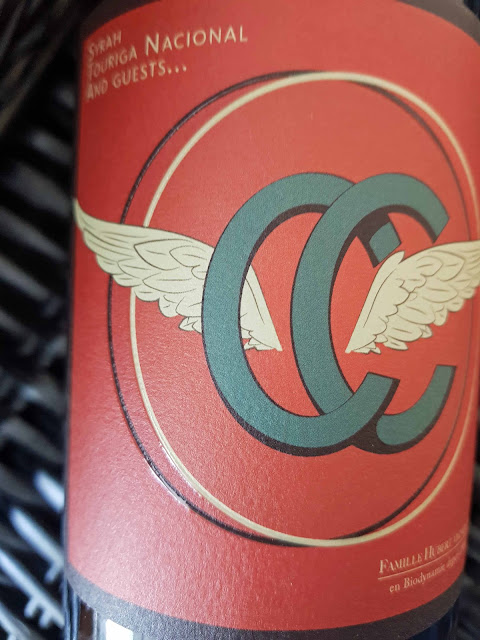Wines of the World Online Tasting
With Kate Barry
Very much enjoyed my virtual visit to the weekend’s Wines of the World Tasting with our host Kate Barry. She had three wines to go through but each was anonymous, wrapped in a brown bag, for the time being. Kate made us work (fun!) to determine what we were tasting.
But she did it so well, step by step, in simple English. No online technical hiccups here, every word from Kate was loud and clear. And there were smiles, slurps, and a few laughs, easygoing all the way, a very pleasant way indeed to learn about wine - see below for next Virtual Tasting.
Bag No. 1, a white, was first. “We will use our senses: eyes, nose, palate.” Normally, one of the first checks is to see if the wine is corked. If there’s a “damp cardboard” sensation, you’re in trouble. But no need to worry in this case as the closure is a DIAM cork that comes with a guarantee against cork taint.
Kate holds up the first of the wine: “It is lovely and bright with a medium pale colour. Hold your glass at an angle against a sheet of white paper and you can see it’s of medium intensity, lemon with a hint of gold.” Would the nose be medium or pronounced? “Just about medium,” said Kate. Now cover your glass with a hand, swirl, smell. “Woohoo..Absolutely beautiful.” Smell now for fruit, citrus perhaps. “Lemon, lime, here.” Try now for apple and pear. Stone fruit, melon perhaps. Move on to tropical. “A hint of pineapple”. “And I think there’s a tiny bit of white pepper.”
Now we move to the palate. “Get the wine into your mouth and slurp. You’ll notice the difference!” She smiled. “The tip of the tongue will tell us whether it’s dry or not..” Are we salivating? “I think there’s a medium salivation going on, so a medium plus acidity.” Alcohol? Check the glass for legs or tears, the more tears, the more alcohol. Is there a burn at the back of the throat? “I think this is medium.” The body? Take a sip of water (light bodied) and compare. “This is a bit more than water, so light to medium bodied.”
Now to check the flavour intensity. Medium was Kate’s verdict. Flavours include lime, lemon, green apple, a little spice, minerality (more on palate than nose) plus some stone fruit. Measure the length of the finish, how long does the flavour last? Up to five seconds is short, 5-10 medium, above 10 long. “Eight seconds, really refreshing”. Nothing jarring here. “I think it has a loverly balance, a lovely wine. Not complex, simple and easy drinking”
So now for the reveal. Old or new world? Alcohol content? Vintage? Variety or blend? What have we been drinking? It was a Michel Lynch “Nature” Bordeaux (AOC) 2017, 12%, a blend of Sauvignon Blanc and Semillon, a typical blend of the region.
Michel Lynch “Nature” Bordeaux (AOC) 2017, 12%, €16.50 Wines of the World
A lovely pale colour and silver tints, this vintage has an intense bouquet with notes of white flowers and citrus fruit. The palate fresh and harmonious, underpinned by fine intensity and noteworthy mineral tones. Grown from 100% organically grown grapes in the Bordeaux region of France.
The wine pays tribute to Michel Lynch, one of the great names of Bordeaux wine (Irish, of course). Made from a careful selection of organically grown grapes, it contains as little sulphur as possible and has environmentally friendly packaging.
Fat Bastard Malbec Vin de France 2019, 13%, €11.50 Wines of the World
One difference between red and white wines is that red has tannins. “No tannins in white wine. Full stop!”, says Kate. “Tannins is a dry gritty sensation. Some love it, some hate it. The paler the colour, the lighter the tannin. This one is medium grippy, all integrated.”
The label says a lot here: remarkably full bodied (fat bastard), round and generous. The Fat Bastard Malbec is sourced from southern vineyards, between the Languedoc and the Gers regions. Kate took us through each of the reds in the same way as she tasted the white.
This Malbec has an intense colour with a vibrant purple hue. Elegant with aromas of black cherry and hints of vanilla and chocolate. Generous and unctuous with a delicate spicy finish. Kate: “ It’s a simple easy-drinking food wine. Lovely with a meal. Love it with a steak or Spaghetti Bolognese. Cheese too.”
A French wine created by Thierry Boudinaud, a renowned winemaker who has crafted wines from California to Chile to South Africa. It is named after a British expression describing a particularly rich and full wine.
Graham Norton’s Own Shiraz, South Australia 2017, 14.5%, €14.00 Wines of the World
The Graham Norton Shiraz is from South Australia and is a mix of fruit from different regions offering a reasonably complex, concentrated wine with a deep ruby colour. It’s a bold in aroma and on the palate, juicy wine full of character, just like the man himself! Perhaps that’s why they called it Shiraz rather than Syrah (the French name for the grape denotes, mostly, a gentler wine).
Quite a good wine for a tasting actually. The flavours alone, mostly primary, could fill half a page of your notebook! As is often the case in Australia, the fruit comes from different areas, three in this case: “The Barossa, McLaren Vale and Langhorne Creek; each brings something different.”
Kate enjoyed tasting this one. “A dry wine with medium plus acidity.” She expected a high alcohol count, judging mainly by the burn at the back of throat, and she was spot on. Lots of primary fruit flavours plus some spice. Excellent finish too and well balanced. “I’m a lover of this wine and I hope you enjoyed it too.” We did, enjoyed the whole session.
Casa Silva - Live Zoom Virtual Tasting March 26th
The next live interactive virtual tasting will feature wine expert Kate Barry and Stephen Ludlam from Casa Silva. Casa Silva is Chile’s most awarded winery of the 21st Century – outstanding wines of great quality and fantastic value. It has the oldest wine cellar in the Colchagua Valley. Beneath its traditional and historic facade, however, is one of Chile’s most modern wine facilities. Should be a superb evening. More details, including booking, here.
Kate will hold another recorded (non Zoom) tasting in mid-April. Keep an eye on the website for details. By the way, Wines of the World also do private tastings for firms and other groups.



















